Spirit of vitalization
Updated: 2024-08-09
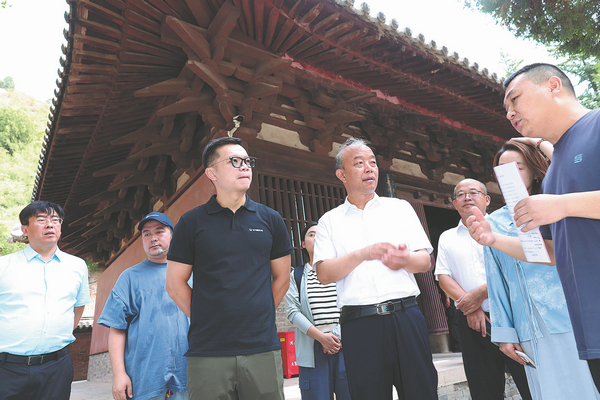
At a reopening ceremony held in late June at the Qinglian (Green Lotus) Temple in Jincheng, Shanxi province, experts introduce the restoration techniques applied in the temple, which was damaged by heavy rain in 2021. ZHU XINGXIN/Provided to CHINA DAILY
Restoration and protection of ancient structures shows a community determined to succeed, report Wang Qian and Zhu Xingxin in Jincheng, Shanxi province.
Located in Jincheng in Shanxi province, the Qinglian (Green Lotus) Temple is known for its painted sculptures from the Tang (618-907) and Song (960-1279) dynasties. Following its reopening in June – it was damaged by heavy rain in 2021 – the wooden temple has regained its former glory, and is attracting many tourists.
Bai Xuebing, deputy director of the Shanxi Cultural Relics Bureau, says that longer rainy seasons and more frequent flash flooding caused by climate change are the main factors threatening ancient buildings in the province.
To Bai's delight, the temple has been restored to its original splendor thanks to a renovation project sponsored by the China Foundation for Cultural Heritage Conservation and the Beijing Bytedance Foundation. Ten million yuan ($1.40 million) was spent on the restoration of four of its ancient structures over a three-year time frame.
Bai believes this is a good example of how social organizations can get involved in ancient restoration projects.
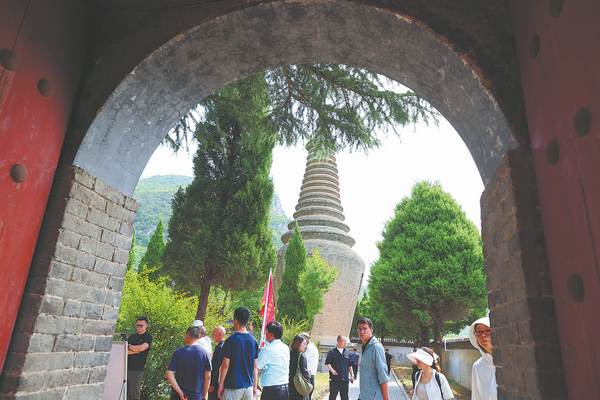
The temple regains its former glory. ZHU XINGXIN/Provided to CHINA DAILY
Known as a treasure house of historical architecture, Shanxi is home to 28,027 ancient buildings, most made from wood and mud brick, according to data compiled during the third national cultural relics census.
Among them, 421 are registered as national-level key sites. In Jincheng alone, there are 58 wooden structures from the Song and Jin (1115-1234) dynasties, which are about 1,000 years old and they account for more than 30 percent of the national total.
Thanks to the region's dry, windy climate and low rainfall, the structures, most of which were constructed on high platforms, have been well-preserved.
Although they have stood the test of time, Bai knows that the changing climate, heavy rain and fluctuating humidity challenges their structural integrity.
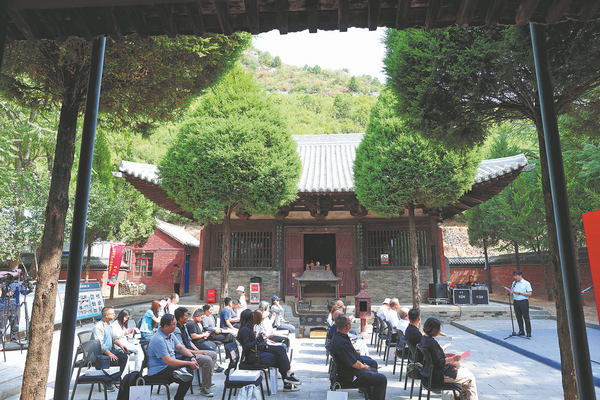
Thanks to a renovation project sponsored by the China Foundation for Cultural Heritage Conservation and the Beijing Bytedance Foundation, 10 million yuan ($1.40 million) was spent on the restoration of four of Shanxi's ancient structures over a three-year time frame. ZHU XINGXIN/Provided to CHINA DAILY
"Both rainwater and groundwater, along with atmospheric condensation, are directly influenced by the climate, and can penetrate the fabric of heritage structures in various ways," Bai says. "This, combined with the effects of freeze-thaw cycles and microorganisms, accelerates the deterioration of their surfaces."
Among the structures threatened by climate change is the Qinglian Temple, which was seriously damaged during a deluge in October 2021. The average rainfall in Shanxi for October is 31.1 millimeters, but between 8 pm on Oct 2 to 8 am on Oct 7 that year, the province experienced an average of 119.5 mm of rain.
Jiao Kai, a staff member of the Jincheng Cultural Relics Protection Research Center, and who is stationed at the temple, still remembers torrents of water rushing down the mountains, rocks falling, roads being blocked, and the temple being flooded.
"The water rushed out of the gate like a river," he says, adding that there was even a small waterfall for two hours.
"I felt that if it continued to rain, the temple could collapse."
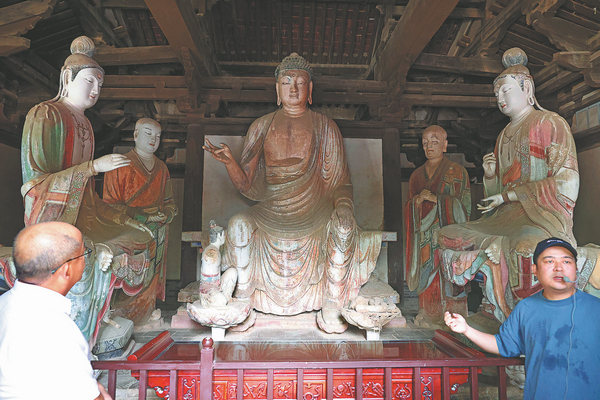
The temple's painted sculptures from the Tang (618-907) and Song (960-1279) dynasties are a key attraction. ZHU XINGXIN/Provided to CHINA DAILY
All the 21 buildings in the temple area experienced leaks, with their tiles loosening and cracking. Most of the rafters were no longer viable, and boards became severely rotted.
For Jiao and his colleagues, the most urgent task was to prevent the buildings from collapsing to protect their precious contents.
They wrapped the statues in plastic sheets and, after the rain stopped, steel scaffolding was erected over the most important buildings.
Meanwhile, the provincial government sent 10 teams of experts out to rain-hit areas around Shanxi, where they found that 1,783 ancient buildings had been affected by the storm. A charity project was swiftly initiated, and the Shanxi Ancient Architecture Group won the bid to renovate the temple.
Li Tianshu, deputy general manager of the group, knows it was not easy to restore the temple to its former glory. His team turned to ancient solutions, including methods used by those who originally built them.
In order to retain historical authenticity, the Jincheng City Cultural Relics Protection Research Center set up the country's first ancient building rain and grass prevention experimental base next to the Qinglian Temple in 2022.
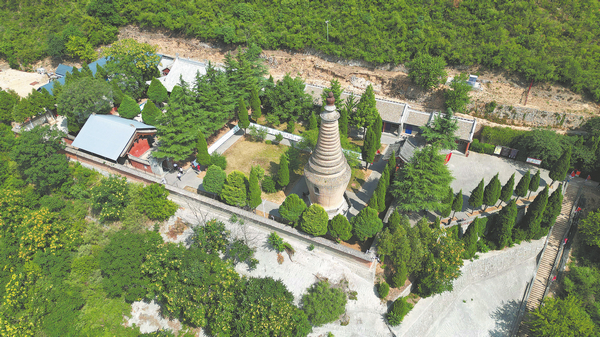
A bird's-eye view of the restored Qinglian Temple. ZHU XINGXIN/Provided to CHINA DAILY
"Besides ancient methods, we also paid attention to waterproofing techniques to tackle potential downpours in the future," Li says.
Based on the Yingzao Fashi (State Building Standards), the oldest extant Chinese technical manual on buildings published in 1103, the experts agreed on seven methods to protect roofs against harsh weather, which also provided guidance to the restoration.
As a consultant and supervisor, 73-year-old Si Choufu from Zezhou county is passionate about the restoration of ancient buildings. In the late 1970s, when the carpenter was in his 20s, he visited the temple and was astonished by its carved corridors and dougong (interlocking wooden brackets) roofs.
He pondered ways of stopping moss and grass from growing on the roofs and finally remembered that in the past, lime was used in roof repairs, but that it was rarely used anymore. Si decided to give it a try.
His hunch proved correct when after adding lime to repair materials, grass and moss no longer grew on the roofs.
Bai views the restoration of ancient artifacts as a race against time, and feels that if they are not properly protected in time, some exceptionally valuable treasures may be lost.
As a province with one of the biggest troves of ancient architecture in China, Shanxi is committed to the restoration and protection of these structures. In 2008, as part of the national cultural relics' 11th Five-Year Plan (2006-10), 105 ancient edifices built before the Yuan Dynasty (1271-1368) in southern Shanxi were restored. In 2017, the province launched an experimental program enabling enterprises to "adopt "ancient buildings and support their daily maintenance.
With many heritage sites scattered across the province's remote areas, which are not rated, experts say that threats from natural disasters like torrential rain are accelerating their disappearance.
Contact the writers at wangqian@chinadaily.com.cn



